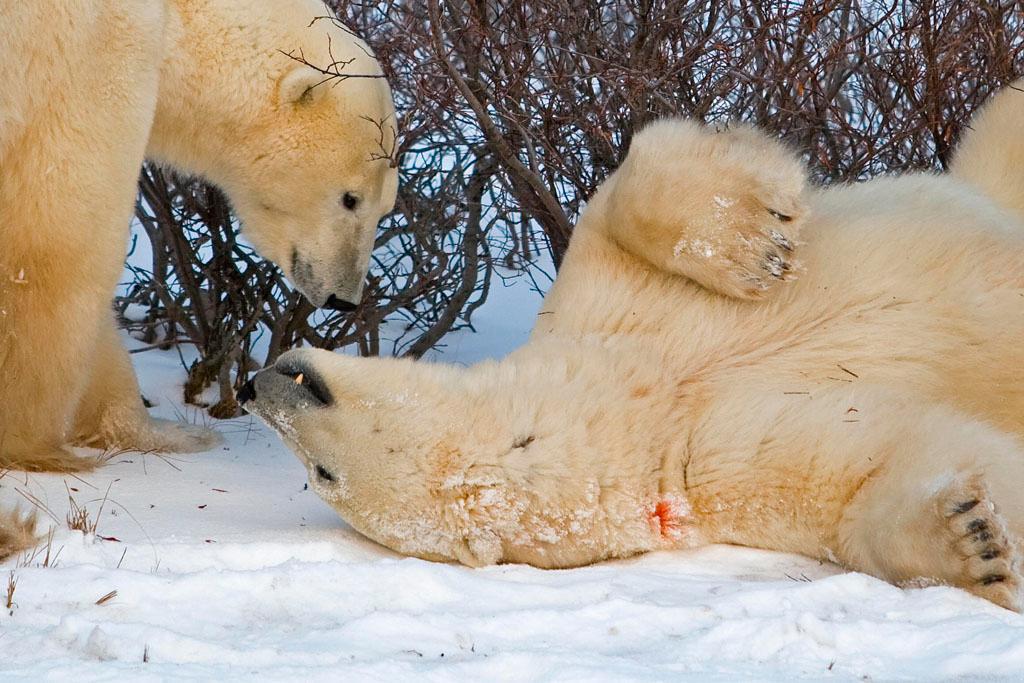Polar bear population healthy, may be growing in northern Canada
Two polar bears play near Hudson Bay near Churchill, Man. New government research shows more polar bears than once believed, although longtime researchers dispute how the data was collected.
There are more polar bears in a key region of northern Canada than scientists predicted, new government-backed evidence released Wednesday shows, the Vancouver Sun reported.
However, experienced polar bear researchers are already calling the data into question.
An aerial survey of western areas of Hudson Bay showed more than 1,000 animals, or about 66 percent more than previous estimates, said Drikus Gissing, director of wildlife management for the territorial Government of Nunavut.
“We have the information that suggests that the population is at best stable, and not in decline as predicted,” he said. “It’s a viable population.”
Surveyors and Nunavut hunters used airplanes and helicopters to measure about 5,000 miles of coastline last August.
Climate scientists see polar bear numbers as key indicators to environment health because bears require long, cold winters to hunt seals.
However, Gissing said his study doesn’t discount climate change fears, CBC News reported.
More from GlobalPost: Polar bear breaks into series of Newfoundland homes
“If I could convey one message here, it’s that polar bears are not endangered,” he said. “And this confirms it. They are not endangered. There are concerns about the effects of global warming, but they are not endangered.”
The findings appear to contradict earlier, tag-and-release measurements, CBC said.
A 2004 survey found 935 bears, a decline of 159 from a decade before. Scientists then predicted that if climate change continued, the polar bear population around Hudson Bay would dip to about 600.
At least one longtime polar bear researcher has serious questions about the new data, The Globe and Mail said.
Andrew Derocher, a science professor at University of Alberta in Edmonton, took issue with how the Nunavut study arrived at its final number.
He said the conclusion is based on a range of measurement – from 717 bears to 1,430, and all evidence points to 1,430 bears being extremely unlikely.
“It’s premature to draw many conclusions,” he told the Globe.
He also pointed to the number of young bears. The study counted 72 bears younger than 2 years old, not nearly enough for a healthy future, Derocher said.
“This is a clear indication that this population is not sustaining itself in any way, shape, or form,” he said.
Traditional Nunavut hunters have long provided anecdotal evidence that there are more bears, and campaigned for greater hunting quotas.
A guide can earn as much as $50,000 for a polar bear hunting trip, the Globe said, and pelts fetch as much as $15,000 in foreign markets.
Government research is one method used to set hunting limits, which will be released in June.
Last year, the quota for polar bears in the western area of Hudson Bay was eight.
More from GlobalPost: Is Myanmar ready for business?
The story you just read is not locked behind a paywall because listeners and readers like you generously support our nonprofit newsroom. If you’ve been thinking about making a donation, this is the best time to do it. Your support will get our fundraiser off to a solid start and help keep our newsroom on strong footing. If you believe in our work, will you give today? We need your help now more than ever!
